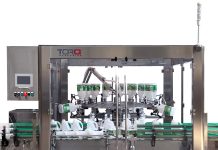A review on technical and scientific information to identify the most suitable bentonite.
Limpidity and stability are among the requirements that consumers consider as essential in determining the quality of wine (1), especially for white wine (2), in which protein instability represents one of the most common non-microbial defects (3). As a matter of fact, the development of turbidity in a bottled wine or the formation of amorphous sediment occurs as a result of denaturation and flocculation processes within the protein fraction.
This affects the commercial value of wine, making it unacceptable for sale (4). Other non-protein factors, such as pH, content of ethanol, concentration of polysaccharides, polyphenols, flavonols, sulfates, and of metal ions can contribute to determine the colloidal stability of wines and, therefore, their tendency to form turbidity. Stabilization treatments are, therefore, essential to ensure limpidity over time and to prevent the formation of deposits in the bottle. The stabilizing agent normally used is bentonite, a hydrated aluminum silicate, mainly composed of montmorillonite. Bentonite shows a lamellar structure interspersed with exchangeable ions (to a greater extent, calcium and sodium ions) and hydration water (5). Bentonite features a net negative charge at the pH of wine, and it is able to interact with the positively charged protein fractions (6). The latter will be eliminated from the liquid by precipitation with bentonite particles. Bentonite is not commonly used for red wines because it is believed that the tannin content of the matrix is sufficient to combine proteins and to stabilize the product (7). Furthermore, the application of bentonite to red wines may cause some problems, including a variation in the concentration and composition of phenolic compounds and anthocyanins, and consequently it might affect the color intensity and tonality (8). It is therefore important to understand whether the action of bentonite on red wines can be useful, while avoiding a negative impact on compounds influencing wine color and texture.

Table 2: Total polyphenols of the treated samples and of the untreated sample.
Table 3: Anthocyanin content of the treated samples and of the untreated sample.
Table 4: Tannin content of the treated samples and of the untreated sample.




